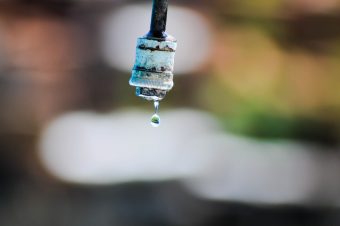Water shortages are likely to be the key environmental challenge of this century, scientists from Nasa have warned, as new data has revealed a drying-out of swaths of the globe between the tropics and the high latitudes, with 19 hotspots where water depletion has been dramatic.

Areas in northern and eastern India, the Middle East, California and Australia are among the hotspots where overuse of water resources has caused a serious decline in the availability of freshwater that is already causing problems. Without strong action by governments to preserve water the situation in these areas is likely to worsen.
Some of these hotspots were previously undocumented or poorly understood: a region in north-western China, in Xinjiang province, has suffered dramatic declines despite receiving normal amounts of rainfall, owing to groundwater depletion from industry and irrigation.
The Caspian Sea was also found to be showing strong declines owing to similar forces, which is resulting in a shrinking shoreline. Previously, this change had been attributed to natural variability, but the new report demonstrates it was caused in large part by the diversion and extraction of water from rivers that feed it, for agriculture and industry. This depletion mirrors the well-known fate of the disappearing Aral Sea in the same region: because the Caspian Sea is much bigger it would take millennia to disappear altogether, but its shrinking shoreline and pollution will cause major problems throughout its borderlands.
The comprehensive study, the first of its kind, took data from the Nasa Grace (Gravity Recovery and Climate Experiment) satellite mission to track trends in freshwater from 2002 to 2016 across the globe.
“What we are witnessing is major hydrologic change. We see for the first time a very distinctive pattern of the wet land areas of the world getting wetter, in the high latitudes and the tropics, and the dry areas in between getting drier,” said James Famiglietti, of the Nasa Jet Propulsion Laboratory in California, and co-author of the paper published today in Nature. “Within the dry areas we see multiple hotspots resulting from groundwater depletion.”
Climate scientists, including the Intergovernmental Panel on Climate Change, have predicted such a global trend. The new paper’s authors said it was too soon to confirm whether their observations were definitely the result of global warming, but said their results showed a “clear human fingerprint” on the global water cycle.
The study is unprecedented, as the Grace data allowed the scientists to see in detail the changes in freshwater resources around the world, even where locally amassed data has been scarce or unavailable. By linking the satellite data with local monitoring, they added another crucial dimension.
Marc Stutter, of the James Hutton Institute in Aberdeen, who was not involved with the study, said: “Such new data add insight into how we manage both obvious surface waters and hidden subsurface water stores [as] the satellite techniques see vital hidden water reserves under our feet, much like an x-ray to see the health of our unseen water reserves.”
He said it provided an early warning that could allow better management of water resources across the world, which was needed.
In northern India, groundwater extraction for irrigation of crops such as wheat and rice have caused a rapid decline in available water, despite rainfall being normal throughout the period studied. “The fact that extractions already exceed recharge during normal precipitation does not bode well for the availability of groundwater during future droughts,” the authors said, adding that the much-discussed melting of Himalayan glaciers was of only minor significance in the period studied.
In Iraq and Syria, widespread over-reliance on groundwater has resulted from the construction by Turkey of 22 dams on the Tigris and Euphrates rivers, over the last three decades. This has made the area the biggest hotspot identified by the study, outside of sparsely or uninhabited regions such as Antarctica and Greenland, with water resources nearly a third below their normal state.
Jonathan Farr, senior policy analyst at the charity WaterAid, said governments must take note of the findings and increase their role in preserving water resources and providing freshwater to people in a sustainable manner. “This report is a warning and an insight into a future threat. We need to ensure that investment in water keeps pace with industrialisation and farming. Governments need to get to grips with this,” he said, pointing to estimates that between $30bn and $100bn of investment was needed per year to provide freshwater where needed.
Sustainable solutions were available, he said. “We have been solving the problem of getting access to water resources since civilisation began. We know how to do it. We just need to manage it, and that has to be done at a local level.”
Providing access to clean water provides knock-on benefits to health, education, equity and the economy, he added, so investment in water assets yields both economic and social dividends.
Source: Guardian



